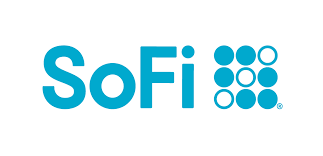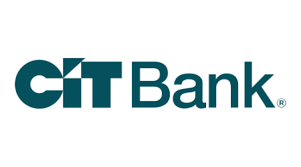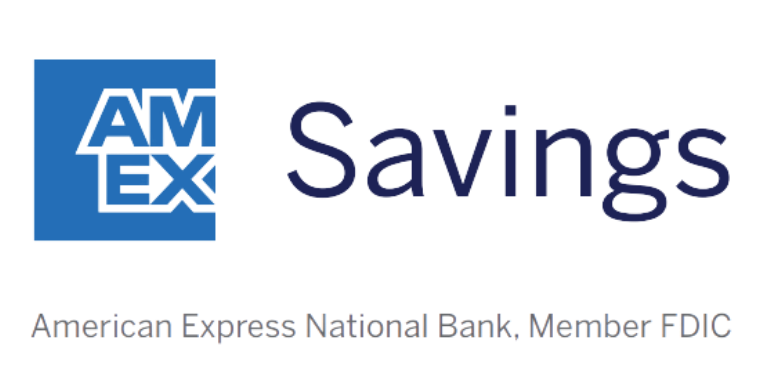You probably know that savings are a crucial part of building financial security. But where should you store your money? Ideally, you want to earn interest. You also need to be able to access your cash when you need it.
Money market accounts and savings accounts both offer decent interest rates and relative liquidity. The two have a lot in common, as well as a few differences that you need to be aware of. Let's take a look at money market accounts vs. savings accounts to see which is the right choice for you.
How do money market accounts work?
A money market account (MMA) is a deposit account available from most financial institutions. The best money market accounts typically offer higher (or at the very least, the same) interest rates as high-yield savings accounts. This helps you grow your hard-earned cash. One perk is that you can often get check-writing privileges and even a debit card, giving you easy access to your money.
Since these are deposit accounts, the Federal Reserve's Regulation D limits the number of withdrawals or transfers to six per month (though the Fed has temporarily withdrawn these restrictions due to COVID-19, though banks can still impose their own restrictions). The good news is that withdrawals in person and through ATMs technically don't count.
How do savings accounts work?
A savings account is also a deposit account offered by credit unions and banks. Interest rates vary depending on which financial institution you go with. You'll tend to find the best rates with online-only institutions.
Like money market accounts, savings accounts are also governed by Regulation D. However, you typically won't get a debit card or check-writing privileges with a savings account. If you need to move money around, you can make an online transfer or head to your nearest branch. You'll need to link the account to a checking account and transfer cash to it if you want to write checks.
Compare savings rates
Make sure you're getting the best account for you by comparing savings rates and promotions. Here are some of our favorite high-yield savings accounts to consider.
| Account | APY | Promotion | Next Steps |
|---|---|---|---|

Open Account for SoFi Checking and Savings
On SoFi's Secure Website.
Rating image, 4.50 out of 5 stars.
4.50/5
Our ratings are based on a 5 star scale.
5 stars equals Best.
4 stars equals Excellent.
3 stars equals Good.
2 stars equals Fair.
1 star equals Poor.
We want your money to work harder for you. Which is why our ratings are biased toward offers that deliver versatility while cutting out-of-pocket costs.
|
up to 3.80%²
Rate info
You can earn the maximum APY by having Direct Deposit (no minimum amount required) or by making $5,000 or more in Qualifying Deposits every 30 days. See SoFi Checking and Savings rate sheet at: https://www.sofi.com/legal/banking-rate-sheet.
Min. to earn: $0
|
New customers can earn up to a $300 bonus with qualifying direct deposits!¹
|
Open Account for SoFi Checking and Savings
On SoFi's Secure Website. |

Open Account for CIT Platinum Savings
On CIT's Secure Website.
Rating image, 4.50 out of 5 stars.
4.50/5
Our ratings are based on a 5 star scale.
5 stars equals Best.
4 stars equals Excellent.
3 stars equals Good.
2 stars equals Fair.
1 star equals Poor.
We want your money to work harder for you. Which is why our ratings are biased toward offers that deliver versatility while cutting out-of-pocket costs.
|
4.10% APY for balances of $5,000 or more
Rate info
4.10% APY for balances of $5,000 or more; otherwise, 0.25% APY
Min. to earn: $100 to open account, $5,000+ for max APY
|
Earn a bonus of at least $225 after a one-time deposit of $25,000+.
Transfer a one-time deposit of $25,000-$49,999.99 for a bonus of $225. Transfer a one-time deposit of $50,000+ for a bonus of $300. Account must be opened with code PS2025 while this promotion lasts, and funded within 30 days. Bonus will be fulfilled within 60 days from the funding date. There is no period of time where the customer will be required to maintain the funds. Account must be open when bonus is credited. One bonus per account and primary customer. Bonus will be credited into the Platinum Savings Account that fulfills the funding requirement. Funding can be deposited all at once or incrementally.
|
Open Account for CIT Platinum Savings
On CIT's Secure Website. |

Open Account for American Express® High Yield Savings
On American Express's Secure Website.
Rating image, 4.00 out of 5 stars.
4.00/5
Our ratings are based on a 5 star scale.
5 stars equals Best.
4 stars equals Excellent.
3 stars equals Good.
2 stars equals Fair.
1 star equals Poor.
We want your money to work harder for you. Which is why our ratings are biased toward offers that deliver versatility while cutting out-of-pocket costs.
|
3.70%
Rate info
3.70% annual percentage yield as of April 4, 2025. Terms apply.
Min. to earn: $0
|
N/A
|
Open Account for American Express® High Yield Savings
On American Express's Secure Website. |
SoFi disclosure:
¹ New and existing Checking and Savings members who have not previously enrolled in Direct Deposit with SoFi are eligible to earn a cash bonus of either $50 (with at least $1,000 total Direct Deposits received during the Direct Deposit Bonus Period) OR $300 (with at least $5,000 total Direct Deposits received during the Direct Deposit Bonus Period). Cash bonus will be based on the total amount of Direct Deposit. Direct Deposit Promotion begins on 12/7/2023 and will be available through 1/31/26. See full bonus and annual percentage yield (APY) terms at sofi.com/banking#1.
² SoFi members who enroll in SoFi Plus with Direct Deposit or by paying the SoFi Plus Subscription Fee every 30 days or with $5,000 or more in Qualifying Deposits during the 30-Day Evaluation Period can earn 3.80% annual percentage yield (APY) on savings balances (including Vaults) and 0.50% APY on checking balances. There is no minimum Direct Deposit amount required to qualify for the stated interest rate. Members without either SoFi Plus or Qualifying Deposits, during the 30-Day Evaluation Period will earn 1.00% APY on savings balances (including Vaults) and 0.50% APY on checking balances. Only SoFi Plus members are eligible for other SoFi Plus benefits. Interest rates are variable and subject to change at any time. These rates are current as of 1/24/25. There is no minimum balance requirement. Additional information can be found at http://www.sofi.com/legal/banking-rate-sheet. See the SoFi Plus Terms and Conditions at https://www.sofi.com/terms-of-use/#plus.
³ We do not charge any account, service or maintenance fees for SoFi Checking and Savings. We do charge a transaction fee to process each outgoing wire transfer. SoFi does not charge a fee for incoming wire transfers, however the sending bank may charge a fee. Our fee policy is subject to change at any time. See the SoFi Checking & Savings Fee Sheet for details at sofi.com/legal/banking-fees/.
⁴ SoFi Bank is a member FDIC and does not provide more than $250,000 of FDIC insurance per depositor per legal category of account ownership, as described in the FDIC’s regulations.
Any additional FDIC insurance is provided by the SoFi Insured Deposit Program. Deposits may be insured up to $3M through participation in the program. See full terms at SoFi.com/banking/fdic/sidpterms. See list of participating banks at SoFi.com/banking/fdic/participatingbanks.
⁵ We’ve partnered with Allpoint to provide you with ATM access at any of the 55,000+ ATMs within the Allpoint network. You will not be charged a fee when using an in-network ATM, however, third-party fees incurred when using out-of-network ATMs are not subject to reimbursement. SoFi’s ATM policies are subject to change at our discretion at any time.
⁶ Early access to direct deposit funds is based on the timing in which we receive notice of impending payment from the Federal Reserve, which is typically up to two days before the scheduled payment date, but may vary.
⁷ Overdraft Coverage is limited to $50 on debit card purchases only and is an account benefit available to customers with direct deposits of $1,000 or more during the current 30-day Evaluation Period as determined by SoFi Bank, N.A. The 30-Day Evaluation Period refers to the “Start Date” and “End Date” set forth on the APY Details page of your account, which comprises a period of 30 calendar days (the“30-Day Evaluation Period”). You can access the APY Details page at any time by logging into your SoFi account on the SoFi mobile app or SoFi website and selecting either (i) Banking > Savings > Current APY or (ii) Banking > Checking > Current APY. Members with a prior history of non-repayment of negative balances are ineligible for Overdraft Coverage.
Savings vs. money market accounts
A crucial difference between a money market account and a savings account is the way you can access your funds. Money market accounts offer a debit or ATM card and the ability to write checks. Savings accounts generally don't. Some financial institutions offer savings account holders an ATM card, but it's not that common.
Another difference is the minimum deposit requirement. Savings accounts typically require lower minimum balances and initial deposit amounts. That's not to say that all money market accounts require high deposits, but many do -- we're talking about a few hundred to several thousand dollars to qualify for the best rates. In return, you can usually earn much better APYs compared to those of savings accounts.
Otherwise, both savings accounts and money market accounts offer similar features. Both types of accounts are FDIC or NCUA insured, meaning your cash is protected up to $250,000 in the event your bank or credit union goes belly up. And you'll find the same transaction restrictions on savings accounts and MMAs.
It's important to consider how you want to use your new bank account before opening one. For instance, if you only have a small amount of money you want to keep in savings, then a money market account may not be for you. That's especially true if you can't meet the minimum opening deposit requirements.
However, if you can afford it and are after the best rates, then a money market account may be your best choice. Plus, money market accounts usually make it easier for you to get at your money. That may be useful, for example, if it's where you are keeping your emergency fund. What if you're the type of person who would be tempted by easier access to your cash? Then, a savings account -- with its lack of ATM and check-writing access -- may be the smarter choice.
| Feature | Money Market | Savings |
|---|---|---|
| FDIC or NCUA insured | Yes | Yes |
| Earns interest | Yes | Yes |
| ATM access | Yes | Varies |
| Check-writing privileges | Yes | No |
| Requires a high minimum deposit | Varies | No |
How to open a money market account or savings account
Before opening either a money market or savings account, it's a good idea to shop around and choose the one that best suits your needs. Think about what's most important to you: online or mobile access, check-writing privileges, or even a financial institution that offers a wide range of accounts.
Check out our picks of the best money market accounts if you think an MMA is the right choice for you. And you'll find plenty of options on our best savings accounts page if you think that would be a better fit.
Once you've decided on the best account for you, opening a new account can be as simple as filling out an online application form. You'll be required to provide personal details to get started. That might include your full name, mailing address, email address, phone number, and Social Security number.
The financial institution will also ask you to provide information on how you'll make your initial deposit amount. Depending on the bank, you can either conduct a bank transfer, wire the funds, or mail a check. Once complete, your bank will mail you a debit card and checks if you opened a money market account that offers these features.
Whichever type of bank account you choose, the most important thing is to make regular contributions to it. Prioritize saving money, even if it's only a small amount each month. Not only can you earn interest on it, but you'll be able to use it if you ever face a financial emergency.
FAQs
-
Choosing a savings vehicle can be challenging, but it's important to carefully review the terms of the account, including under what conditions you'll earn interest, which can include minimum balances that must be maintained. Also be sure to check the fee schedule to make sure it's actually worth the effort for the amount you have to tuck away.
If your bank gives you 5% on savings, but charges $10 a month for your account, your initial deposit of $100 will be eaten up faster than you might think if you're not actively working on growing it. You'll not even see a month where the interest will balance out the fee until your balance reaches $200, which can be very discouraging for a new saver.
We're firm believers in the Golden Rule, which is why editorial opinions are ours alone and have not been previously reviewed, approved, or endorsed by included advertisers. Motley Fool Money does not cover all offers on the market. Motley Fool Money is 100% owned and operated by The Motley Fool. Our knowledgeable team of personal finance editors and analysts are employed by The Motley Fool and held to the same set of publishing standards and editorial integrity while maintaining professional separation from the analysts and editors on other Motley Fool brands. Terms may apply to offers listed on this page. APYs are subject to change at any time without notice.